Advertisement
Planning the design of your bedroom can be a bit tricky, especially if you base your decorations on a theme. In fact, you’ll be already challenged to choose an appropriate theme! Popular trends suggest people to follow themes inspired by different world cultures, and to resemble their architecture and their tradition. Looking for the trendiest one? We would say: A Japanese bedroom!
Japanese bedroom design ideas are supposed to resemble Japanese lifestyle, and are therefore rich with specific patterns and uncommon objects. To start with, Japanese people try to bring nature inside their home, which means you would need natural materials, matte color schemes, and simplified layouts.
The Japanese secret is functionality; and what seems to be their luxurious touch in design, is actually a clean energy flow.
How to design a Japanese bedroom? Here are some simple Zen tricks that can take you there:
Neutral walls
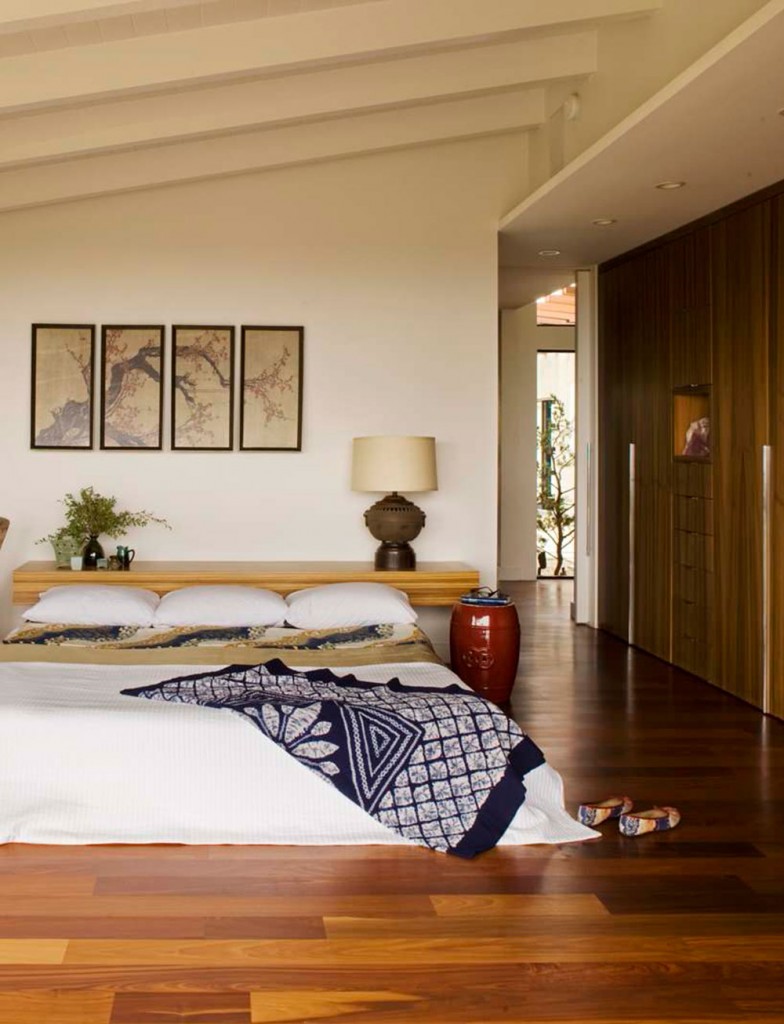 Image source: Laidlaw Schultz architects
Image source: Laidlaw Schultz architects
If nothing else, think about the Japanese movies you’ve watched. Weren’t earthy tones absolutely dominant? That’s exactly what you should do with your bedroom walls: limit the palette to cream, beige, brown, and black.
As we already mentioned, Japanese design worships simplicity. It means that you’re not supposed to use loud wallpapers, or catchy images. A tiny sticker with a floral motif (ideally cherry blossoms or bonsai) will be completely enough to break the monotony.
Specific furniture
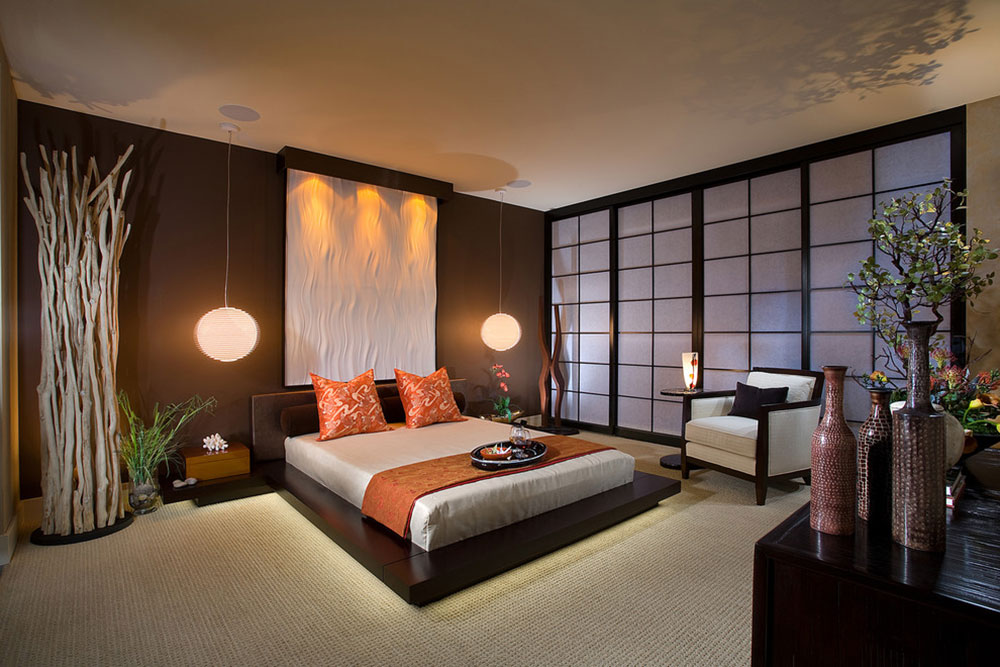 Image source: International Custom Designs
Image source: International Custom Designs
Once you opt for the ‘Japanese bedroom’ option, forget every furnishing rule you’ve complied with so far. Japanese culture favors furniture that lies close to the floors; ideally positioned in the centre of the room. That means that you need a low bed; or even a futon mattress lied straight on the floor.
Next to the bed, you need the compulsory bamboo dresser. The thing to remember when furnishing is to respect limits: any piece other than the absolutely necessary ones will clutter the perfectly-executed theme.
Furthermore, go big! Don’t spare and choose only high quality items. On the Japanese furniture market, the difference between expensive and cheap is really obvious; and you certainly don’t need a ‘second-hand brought-it-and-dropped-it’ bedroom.
Contrast
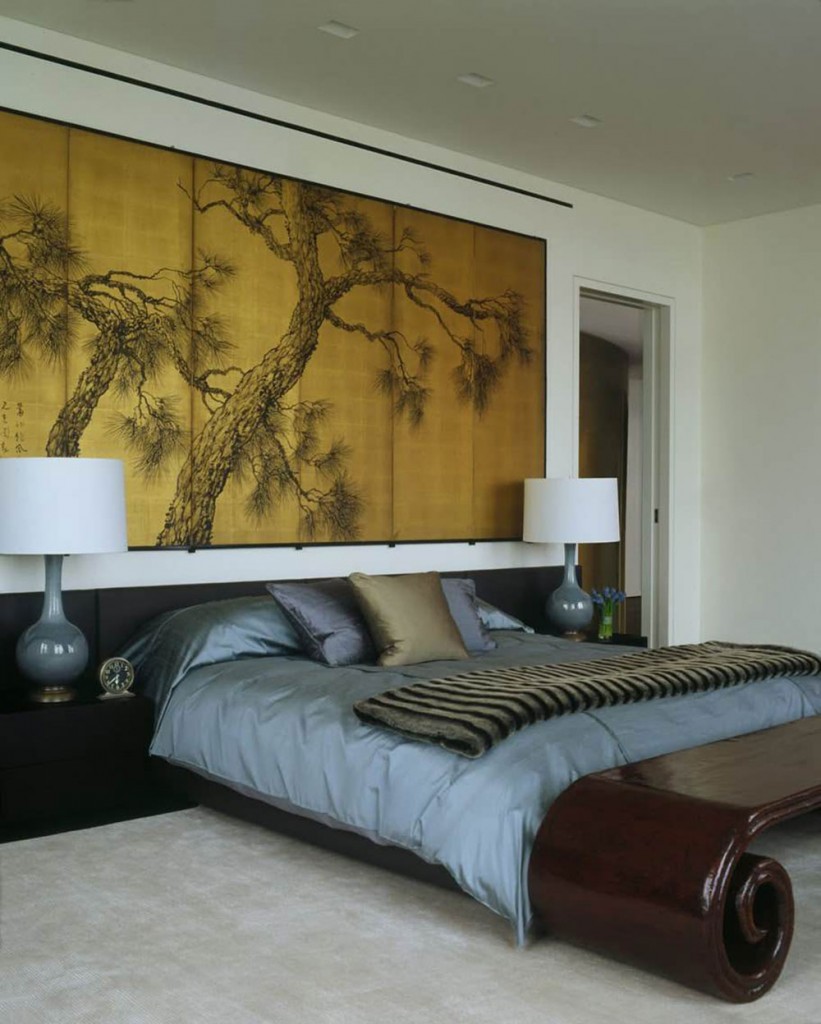 Image source: Incorporated
Image source: Incorporated
Remember yin and yang? That’s how Japanese coloring works! You need strong and obvious contrast in order to obtain the right feel. For instance, light walls look perfect with darker furniture; or at least contrasting bedding. Remember that color application is limited to two objects/sets of objects; and everything else needs to stay neutral. As we already pointed out, the preferred tones are beige, cream, brown, and black.
Carefully calculated layouts
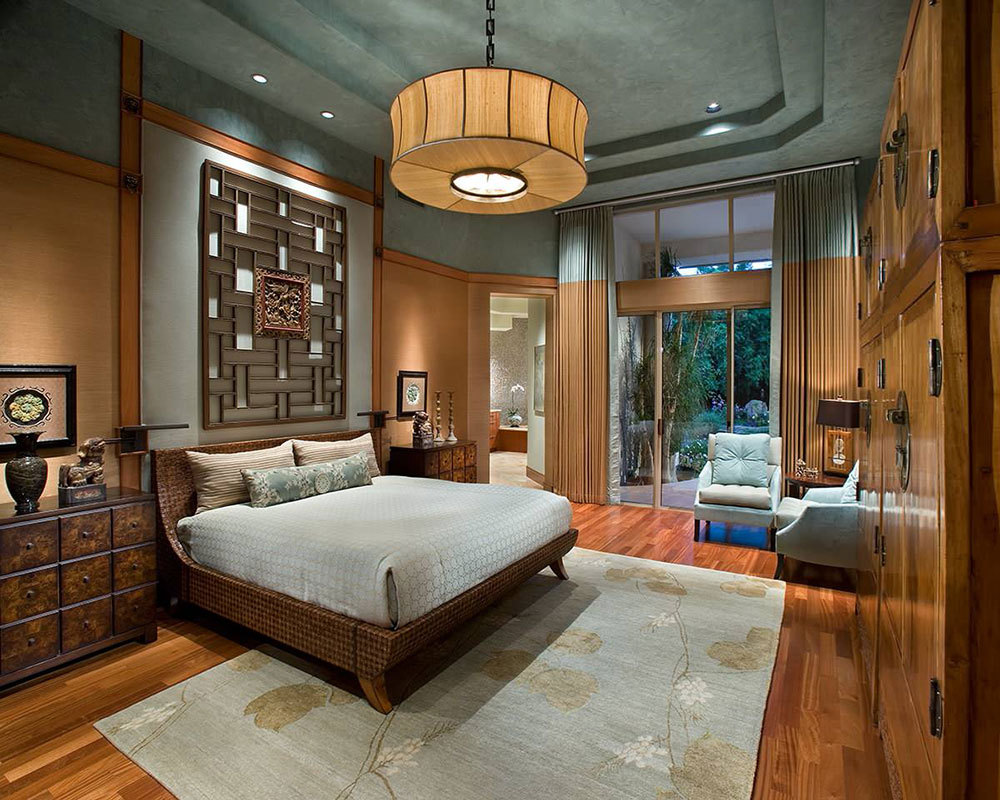 Image source: IMI Design, LLC
Image source: IMI Design, LLC
While Europeans choose a corner for their beds, Japanese tend to position their furniture in the middle. Nothing in Japanese style is accidental-they calculate even the smallest detail!
Natural light
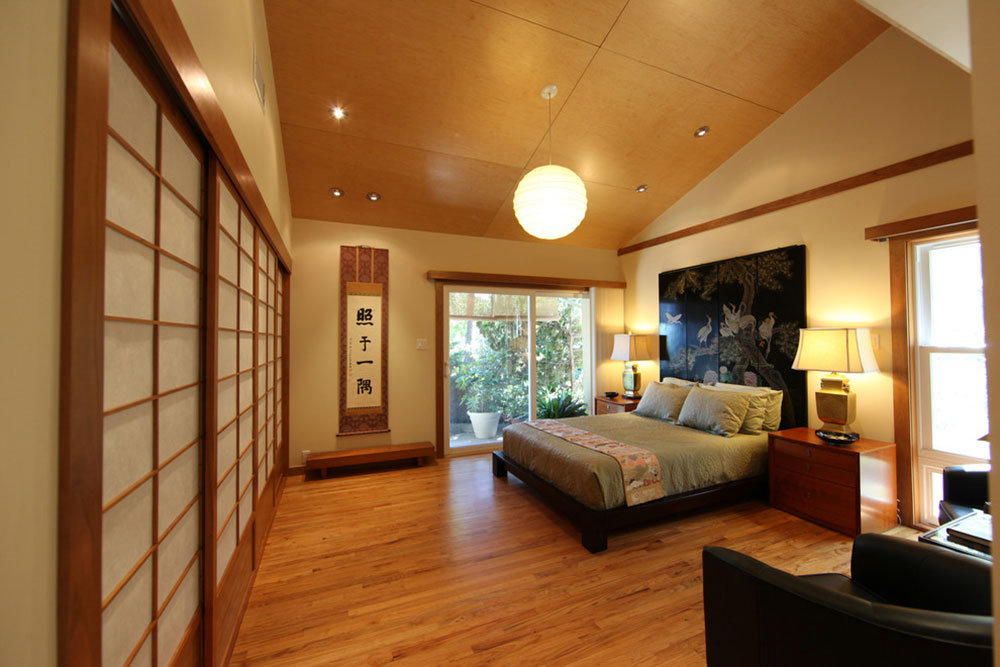 Image source: Narita Architects
Image source: Narita Architects
A bedroom cannot be called Japanese if it’s not completely bathed in natural light. Zen-styled homes love sunlight, which is exactly why their windows are large; and their curtains are widely open (or absent). The reason to endorse sunlight is the need to make the room as friendly and welcoming as possible.
In case you’re not able to comply with this rule, we recommend you to use artificial illumination sources (nightstand lamps, pendant shades, candles, etc); and to arrange them in a way which will ensure that every corner is properly enlightened.
While minimalist Western trends teach us to avoid unnecessary items, Zen encourages us to install lighting fixtures even if we don’t really need them. The most typical choice we could suggest is paper lanterns, and wood-based lamps.
Tatami floors
One of the basic design rules in Japanese culture is to cover the floors. For a really Japanese bedroom, choose a Tatami mat.
For those that haven’t heard of Tatami before, it is a traditional material obtained through the processing of rice straw. The reason why it is so popular is that it’s soft and comfortable even for bare feet. You can either buy a larger wall-to-wall piece; or cute mats for the bed or the seating area.
Organic fabrics
 Image source: Arch-Interiors Design Group, Inc.
Image source: Arch-Interiors Design Group, Inc.
A Japanese bedroom should not only look Japanese-it should feel Japanese! In order to achieve it, choose organic materials such as silk, linen, and cotton. In addition, pick light colors (or even unbleached fabrics); or the accent dark blue typical for Zen-styled bedrooms.
Bedding should also remain neutral, ideally with modest and natural decorations (a branch, a grass, or a single flower). Your thirst for color can be easily satisfied with a decorative pillow (we recommend Japanese embroidery).
Minimum accessories
 Image source: Balodemas Architects
Image source: Balodemas Architects
Your new Japanese-like bedroom is not the right place to expose piles of figurines or expensive artwork, even if those originate straight from Japan. Their style requires you to keep accessorizing minimal; and to choose and arrange accent items with special care. Therefore, choose the best pieces of your rich collections; or a single high-quality item purchased from a craftsman.
Shoji Screens
Shoji screens ‘go’ as Japanese as possible. We’re talking about the famous bamboo panels used to cover and hide parts of the room. Japanese people also use them in front of their windows, so that there will be more privacy, or less light in their room. Still, the real purpose remains to limit space; and to divide the rooms in areas which have different purposes (storage, wardrobe, etc).
A black word in a black frame
Rings a bell, doesn’t it? Japanese people like to make their most important things obvious (even in the case of the bedroom). What is really typical is to choose a meaningful word; to write it by hand on a piece of paper/silk; to frame it in a black frame; and to hang it on the wall.
The final result (a classic black-and-white picture) is not expected to impress people-it is important and beneficial only to the person who is sleeping in that room.
Sliding doors
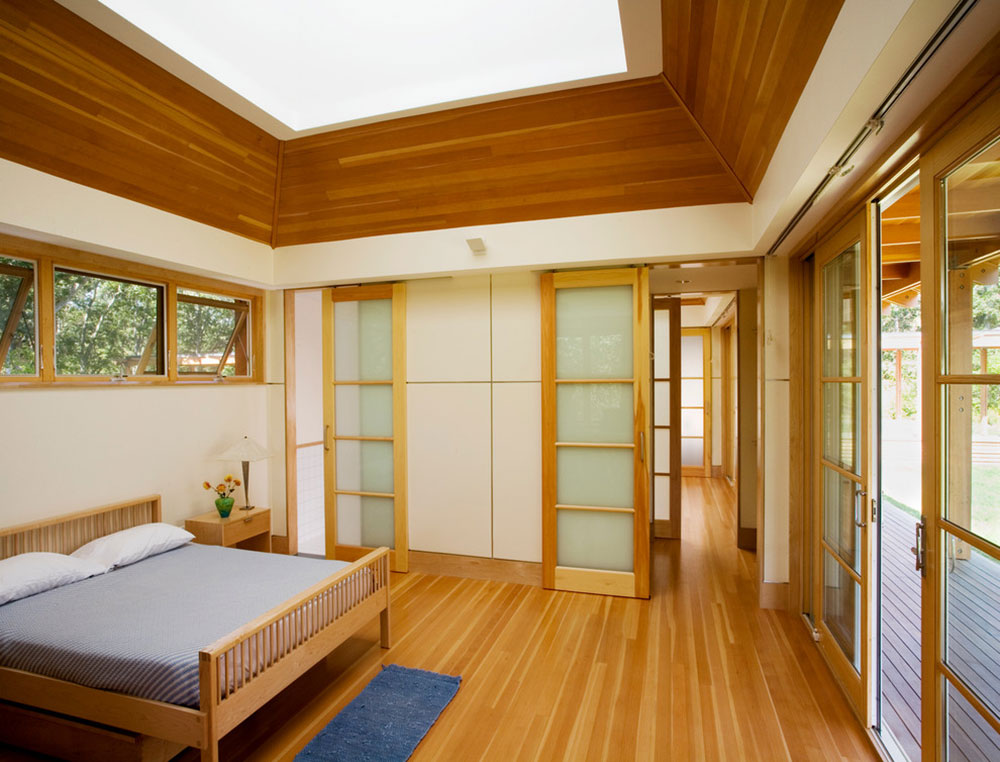 Image source: Moskow Linn Architects
Image source: Moskow Linn Architects
There is almost no Japanese house without sliding doors. The reason is their tendency towards airiness and spaciousness, which is exactly why your room would not be complete without these doors. The ideal choice would be a pair of wooden frames with glass panels or transparent paper inside.
Balanced textures
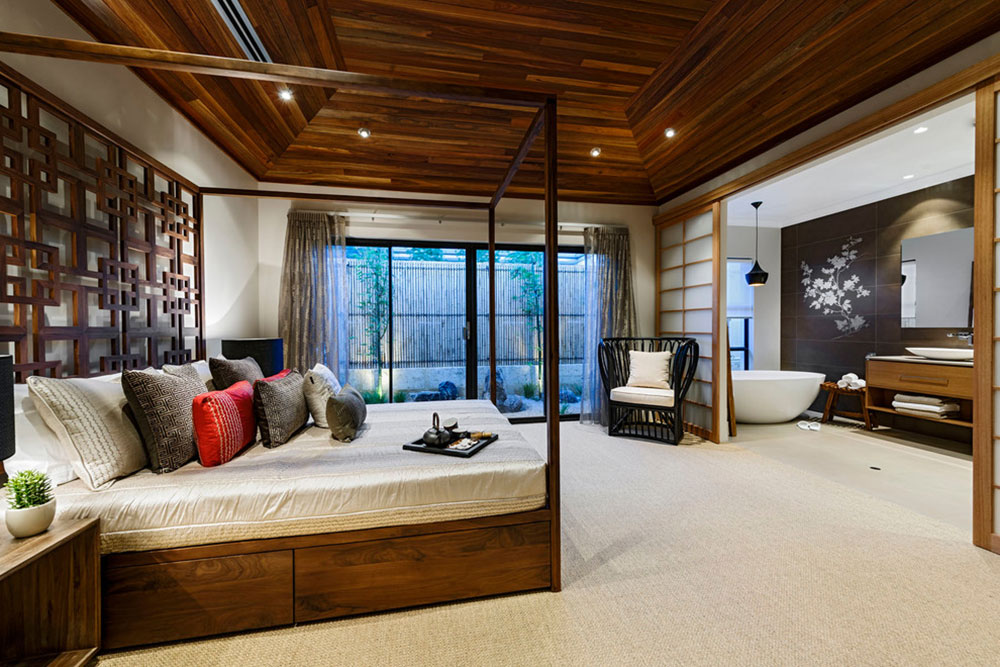 Image source: Webb & Brown-Neaves
Image source: Webb & Brown-Neaves
As you saw it yourself, Asian interior design relies completely on balance. Designers there choose materials carefully; and they mix textures only when those are compatible. Thanks to their amazing skills, they never fail to make textures visible; either thorough specific colors, or appropriate lighting.
Obtaining a real Japanese atmosphere will be a huge achievement; firstly, because it makes bedrooms look peaceful and relaxed; and secondly, because it is an extremely rare choice that never fails to amuse people.
The functionality of this style attracts more and more people to introduce it in their interior planning. It is completely understandable: there is no substitute for the ideal Japanese environment, bringing together traditional peace and contemporary excitement!
If you liked this article about Japanese bedroom design, you should check out this article on how to fill the empty space in a bedroom.
